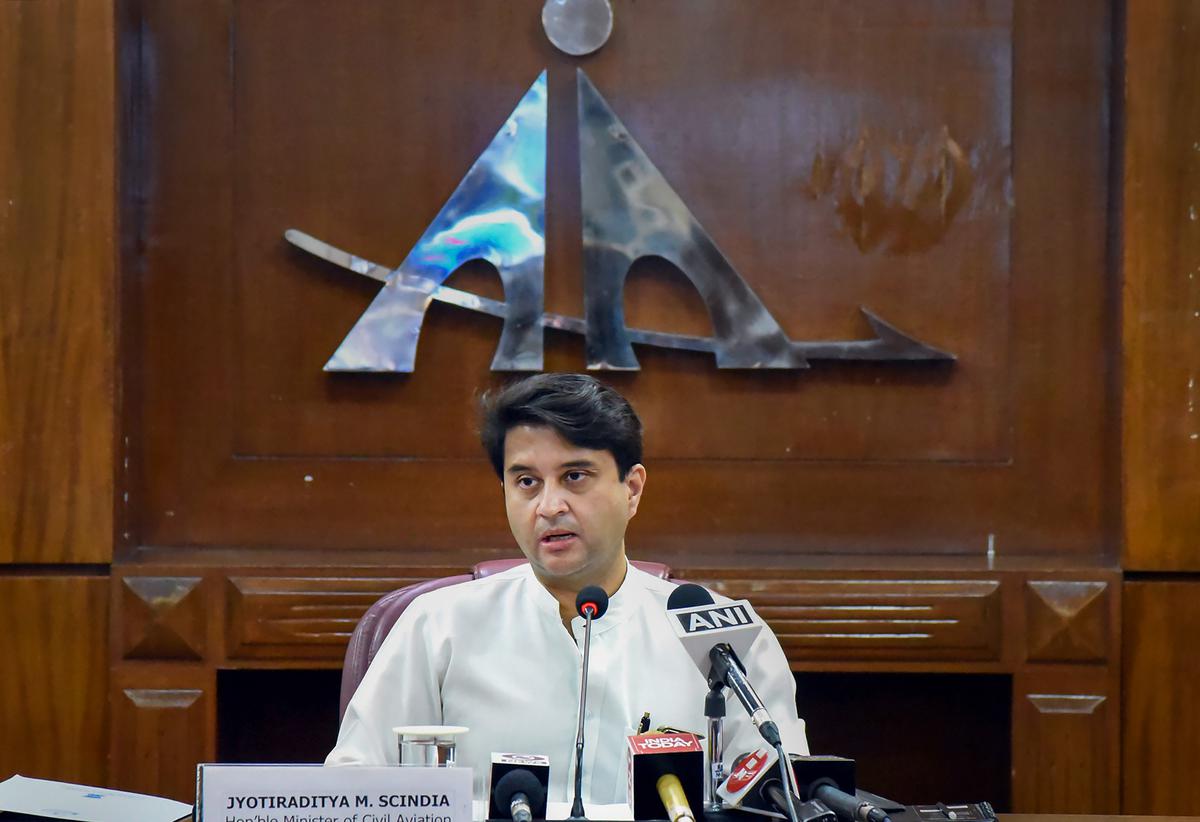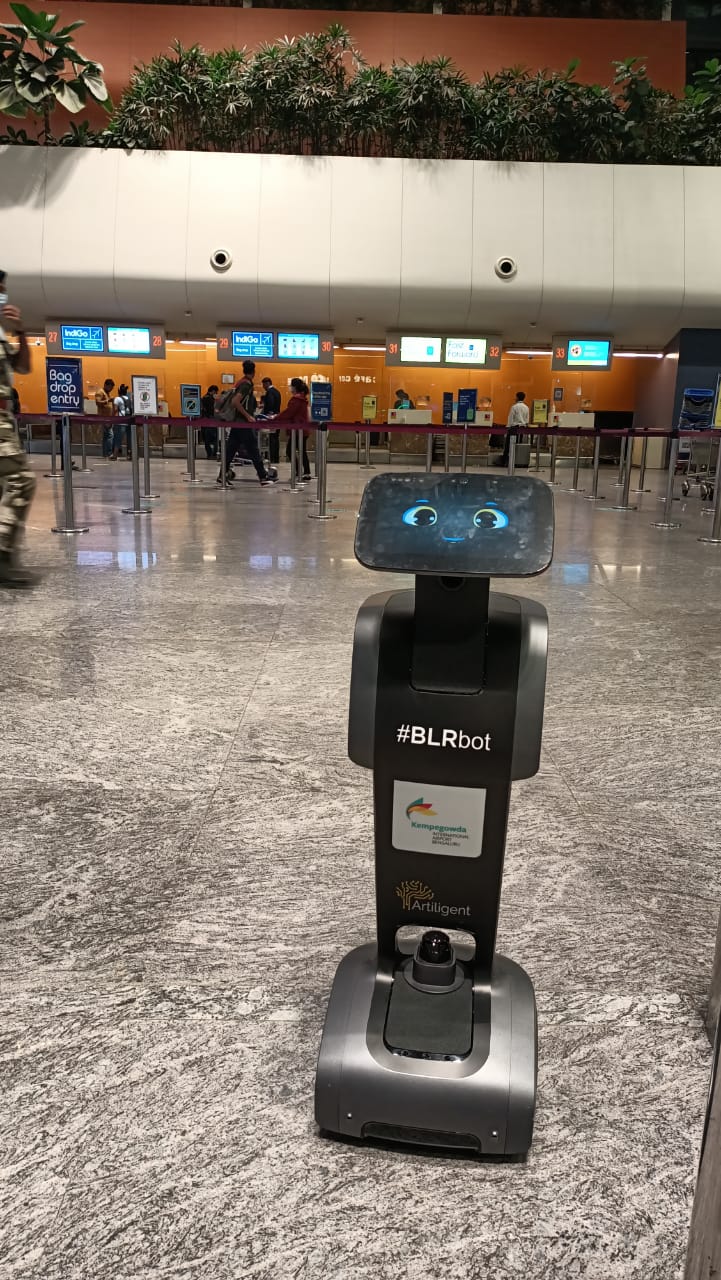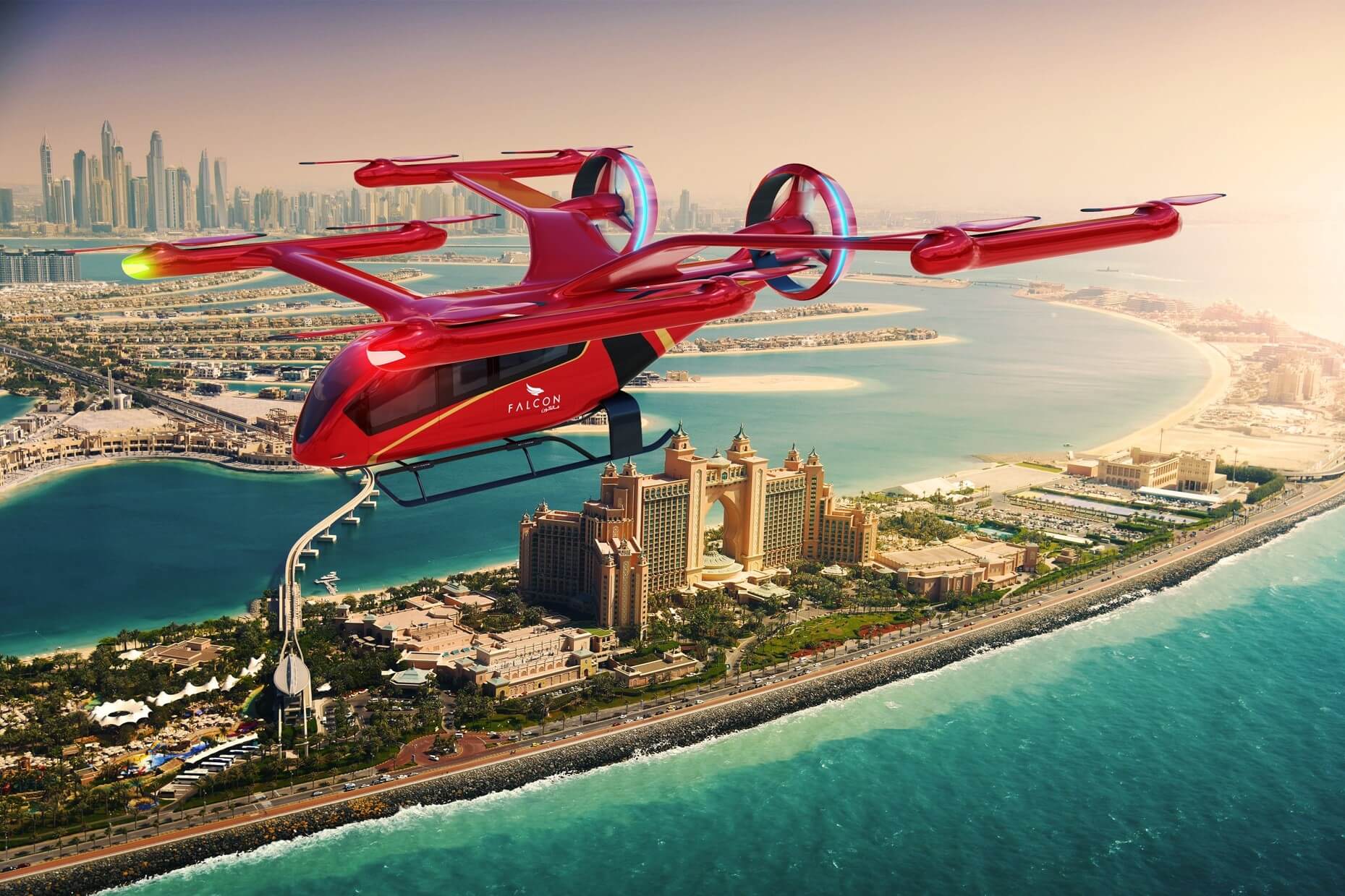Jyotiraditya Scindia launches National Air Sports Policy; aims India to become sports hub by 2030
Radhika Bansal
08 Jun 2022

Civil aviation minister Jyotiraditya Scindia launched a national air sports policy while explaining the enormous potential it holds. The minister said that the country's air sports market has the potential to expand to an INR 1,000-crore industry.
Scindia said the air sports business in India generates revenues of about INR 80 crore to INR 100 crore at the moment. He introduced the National Air Sports Policy 2022 (NASP) to encourage its development.
“From a small market size of around 5,000 odd air sports practitioners creating around INR 80-100 crore of annual revenue in India, I feel we can target over INR 8,000 – 10,000 crore annual revenue and generate over 1,00,000 direct jobs. The economic multiplier benefits in terms of travel, tourism, support services and local infrastructure development will be over three times.The policy (NASP) is a result of great consultation. It is important for the country as we need to look at planting seeds of growth in emerging sectors. Given India’s geographic expanse, we can offer a wide variety of air sports. If you combine that with the demographic dividend of nearly 70% of the population being below the age of 35, this is an industry that is right for the picking."Jyotiraditya Scindia, Union Minister of Civil Aviation
The government has established the Air Sports Federation of India (ASFI), which will have a four-tier structure, as part of the new National Air Sports Policy 2022. ASFI shall be an autonomous body under the civil aviation ministry.
Each federation's association can represent more than one sport, and each association's press and secretary will be represented in ASFI as full members with voting rights. The policy intends to make India's air sports ecosystem safe, affordable, accessible, enjoyable, and sustainable.
Jyotiraditya Scindia launches National Air Sports Policy; aims India to become sports hub by 2030
Aerobatics, aeromodelling, and model rocketry, amateur-built and experimental aircraft, ballooning, drones, gliding and powered gliding, hang gliding and powered hang gliding, parachuting, paragliding, and paramotoring, powered aircraft, and rotorcraft (including autogyro) will all be regulated under the policy.
According to Scindia, this will help create 1 lakh jobs in the sector and raise revenue from the current level of INR 100 crore to INR 10,000 crore in the coming years. The government will also update the list of sports covered by the NASP regularly to include new air sports.
https://twitter.com/JM_Scindia/status/1534074867875577856
Air spaces will be created in certain locations to allow uninhibited air sporting activities in the designated areas and will be coordinated with the Air Traffic Control (ATC) authority responsible for the provision of Air Traffic Services in the respective airspace under NASP as it might conflict with other manned and unmanned aircraft operations.
The policy seeks to position the country among the top air sports nations by 2030 as well as provide a safe, affordable and sustainable air sports ecosystem. To this end, a four-tiered structure overseen by the Air Sports Federation of India (ASFI) headed by the secretary of civil aviation is being set up.
The government will also update the list of sports covered by the NASP regularly to include new air sports.
This will comprise ASFI, national associations for each air sport, state-level associations and district-level associations. The framework will be overseen by eight members of the government, 26 members from the private sector and three eminent individuals.
ASFI will ensure that standards set by the Switzerland-based world governing body for air sports, Fédération Aéronautique Internationale (FAI) are closely followed.
The minister said the structure had been planned to ensure that the growth of air sports was largely led by the private sector. He also informed the ministry of civil aviation was in consultation with the ministry of finance to reduce goods and services tax (GST) on equipment for air sports.
The minister said the structure had been planned to ensure that the growth of air sports was largely led by the private sector.
The Minister of Civil Aviation, was also able to interact with two prominent air sports players – Rachel Thomas (the first Indian woman to skydive from 7,000 feet over the North Pole) and Shital Mahajan, (the first woman to perform an accelerated free fall jump over Antarctica from 10,000 feet).
The Padma Shri awardees expressed their gratitude for the launch of the national air sports policy and said that it will help India become a leading country in the world of air sports by 2030.
ALSO READ - Government publishes National Air Sports Policy draft
Read next
Bengaluru Airport introduces AI-driven robots to provide an improved passenger experience
Radhika Bansal
08 Jun 2022

Kempegowda International Airport, Bengaluru (BLR Airport) has introduced AI-driven, assistance robots to enhance the passenger experience.
Currently, at the trial stage, 10 robots have been deployed at the airport to help guide passengers through the airport and answer basic queries, it said in a statement on Tuesday, June 7.
Bengaluru Airport introduces AI-driven robots to provide an improved passenger experience
The robot count will be increased in a calibrated manner and further developed over a period in terms of functionality and features, after gauging customer feedback, it said.
BLR Airport has partnered with Artiligent Solutions Pvt. Ltd. -- specialists in AI and Robotics -- to model the robots along with creating a customised passenger services software. The default language of communication will be English, with additional regional and international languages in the offing.
"Pre-empting passenger requirements and complementing new-age technology with a focused customer-centric team approach has been our winning combination".Jayaraj Shanmugam, Chief Operating Officer, Bangalore International Airport Limited (BIAL)
The robots will provide a variety of services which include providing information on the flight status, passenger convenience services, directional assistance, retail and F&B information, the statement said.
The robots will provide a variety of services which include providing information on the flight status, passenger convenience services, directional assistance, retail and F&B information
They shall navigate autonomously through the terminal and escort passengers to their desired locations. If due to any reason, the robot is unable to answer queries, passengers shall be immediately connected to the 'Airport Help Desk' via video call, on the robot screen itself, it stated.
Owned and operated by Bangalore International Airport Limited, Bangalore Kempegowda International Airport is the international gateway to Bengaluru and ranks among the busiest airports in India. The airport commenced operations in 2008 and replaced the old HAL Bangalore International Airport.
Read next
DGCA orders probe after Air Arabia crew declares mayday; emergency landing in Ahmedabad
Radhika Bansal
08 Jun 2022
An Air Arabia flight heading from Chittagong in Bangladesh to Abu Dhabi in the United Arab Emirates (UAE) was diverted to Ahmedabad on Monday, June 6 as one of the aircraft engines failed mid-air, senior officials of Indian aviation regulator Directorate General of Civil Aviation (DGCA) said.
The DGCA has launched a probe in the matter, the officials said on Tuesday, June 7. The aircraft "experienced No.1 Engine Stall and Engine Fail ECAM warnings came on", the official added.
The flight, 3L-062, had taken off from Abu Dhabi late on June 6 and was scheduled to reach Chittagong in Bangladesh. However, the air crew declared a Mayday after the flight developed an engine snag on Airbus A320 (A6-AOT).
The air crew declared a Mayday after the flight developed an engine snag on Airbus A320 (A6-AOT).
The flight landed at the Ahmedabad airport at approximately 9:25 PM on Monday, June 6 after one of the engines "stalled" mid-air and the engine failure warning came on, they added.
Due to the warning sign, the crew had to make a "mayday" call and the aircraft was allowed to conduct an emergency landing at the airport, the officials noted. None of the passengers or crew members was injured and the aircraft landed safely.
A DGCA team from its Mumbai regional office, in consultation with the Aircraft Accident Investigation Bureau (AAIB), has been sent to Ahmedabad to conduct the probe, the officials added.
According to the aviation website Skybrary, ECAM is the “Airbus version of an enhanced engine indicating and crew alerting system (EICAS) system. It presents data on the engine/warning display and system display inclusive of primary engine indications, fuel quantity, flap and slat position.”
DGCA orders probe after Air Arabia crew declares mayday; emergency landing in Ahmedabad
In the past few months, there has been a spurt in aircraft engine snags. The DGCA is investigating these snags faced by Indian carriers closely with the original equipment manufacturers. And now a foreign airline’s engine snag also joins its probe list.
ALSO READ - A320neo aircraft of Air India makes an emergency landing in Mumbai after mid-air engine shut down
“In the last three months, there have been one Pratt & Whitney and three CFM engine snags. They all had different issues and were commanded to shut down. It is being investigated closely in consultation with the original equipment manufacturers (PW & CFM),” a senior DGCA official investigating the engine snags faced by Indian carriers said. Industry insiders point out five CFM engine snags in the last 6 months.
Read next
Eve and Falcon Aviation Services collaborate to introduce eVTOL flights in the United Arab Emirates
Prashant-prabhakar
08 Jun 2022

Falcon Aviation Services-a leading Business Aviation Services operator in the Middle East and Africa region, and a subsidiary of Eve Holding, Inc. (“Eve” or the “Company”), had signed a Letter of Intent (LoI) for up to 35 electric vertical take-offs and landing (eVTOL) aircraft, in April 2022.
Representative | Aviator Newsroom
The Letter of Intent (LoI) signed, saw an order placed for up to 35 eVTOL aircraft, besides the fact that both the entities agreed on collaborating with local stakeholders and authorities to extend support and accelerate the development of the Urban Air Mobility (UAM) ecosystem in the United Arab Emirates.
We are ecstatic to partner with Eve and be the first operator of eVTOL in Dubai & the MENA region. The launch of this concept fully aligns with the Smart Dubai vision and will contribute to positioning Dubai as a global leader in sustainable Urban Air Mobility transportation. Falcon is actively engaged in Urban Air Mobility emergence and committed to delivering an effective and sustainable new urban transportation mode and providing the community with better and faster solutions. We are particularly proud to take a new step in the UAE, in a project that will be revolutionary for sustainable urban mobilityCaptain Ramandeep Oberoi, Chief Operating Officer of Falcon, said
Captain Ramandeep Oberoi | Aviation International News
Deliveries are expected to commence by 2026 and the collaboration will launch the first eVTOL touristic flights from the Atlantis, The Palm in Dubai.
We are thrilled about partnering with Falcon and having the immense opportunity to enable the future urban mobility in the United Arab Emirates and launch eVTOL flights in Dubai. This is a massive challenge for both companies, which will help to position Dubai as a leader in the urban air mobility market. Eve’s global experience, which spans different regions across the globe, will surely benefit the achievement of this projectsaid Andre Stein, co-CEO of Eve
Andre Stein | Forum Nacional
After having established itself as a leading operator in the aviation industry in the UAE and the MENA region, Falcon Aviation is located at Abu Dhabi’s Al Bateen Executive Airport and Dubai’s Al Maktoum International Airport.
Backed by Embraer S.A.’s more than 50-year history of aerospace expertise, Eve focuses more on accelerating the Urban Air Mobility ecosystem. According to the company, the UAM market is an estimated $760 billion industry and is apparently in no hurry to launch its aircraft which it dubs a flying taxi.
Stein highlighted the fact that the company is adopting a more holistic approach and is leaning more towards the “right direction”, than running in haste to provide investors with a preview of a prototype.
SOURCE(s)
COVER: AeroTime Hub
Read next
SpiceJet claims to have no impact on operations after 90 pilots barred from flying B737 MAX
Radhika Bansal
07 Jun 2022
Low-cost carrier SpiceJet has clarified that it has 650 pilots who have been trained on MAX aircraft and the DGCA decision to not allow 90 pilots to fly MAX aircraft won't impact operations. The airline is retraining them as per the DGCA order.
ALSO READ - DGCA fines SpiceJet with INR 10 lakh for using the faulty simulator to train B737 Max pilots
“This restriction does not impact the operations of MAX aircraft and the company has adequate trained pilots available for its operations. Basis the observation of DGCA these 90 pilots shall undergo re-training. DGCA has imposed a penalty of INR 10 lakh basis its audit observations," SpiceJet said in the BSE filing.
SpiceJet claims to have no impact on operations after 90 pilots barred from flying B737 MAX
The faults were detected during a surveillance check by the DGCA at the Greater Noida-based facility of CAE Simulation Training Pvt Ltd (CSTPL).
The aviation regulator had imposed INR 10 lakh penalty on the airline after it had used faulty simulators to train these pilots. The carrier has enough trained pilots on hand to meet its needs. These 90 pilots will be re-trained based on the findings of the DGCA.
ALSO READ - 90 SpiceJet pilots barred from flying Boeing 737 Max planes by the DGCA
In a statement, DGCA Director General Arun Kumar said: "For the moment, we have barred these pilots from flying Max and they have to retrain successfully for flying Max. "Also, we will take strict action against those found responsible for the lapse."
SpiceJet has clarified that it has 650 pilots who have been trained on MAX aircraft and the DGCA decision to not allow 90 pilots to fly MAX aircraft won't impact operations.
The airline, which operates 11 of the 13 MAX currently in its fleet, says the 60 daily flights operated on these planes will not be affected.
“About 144 pilots are required to manage 11 aircraft (MAX). SpiceJet has currently 560 trained pilots on MAX. The trained pilot strength is more than sufficient for continuing normal operations,” the airline spokesman said.
Notably, this happened within eight months of the DGCA lifting a ban on Boeing 737 MAX aircraft. While it was grounded worldwide from March 2019 to December 2020 following two crashes — in Indonesia and Ethiopia — killing 346, DGCA lifted the ban much later in August 2021.
The airline, which operates 11 of the 13 MAX currently in its fleet, says the 60 daily flights operated on these planes will not be affected.
SpiceJet shares fell 1.69% to INR 46.40 after India's aviation regulator imposed an INR 10 lakh fine on the low-cost air carrier for training pilots on the faulty simulator.
ALSO READ - SpiceJet posts net profit for Q3
On a consolidated basis, it reported a net profit of INR 42.47 crore against a net loss of INR 66.78 crore. Revenue from operations rose 34.8% year on year to INR 2204.68 crore on 31 December 2021.
This is the third instance when DGCA has imposed a financial penalty on operators after the regulator got the power to impose a financial penalty for violation of rules.
On a consolidated basis, it reported a net profit of INR 42.47 crore against a net loss of INR 66.78 crore.
ALSO READ - DGCA fines two flights schools for violating rules
In October 2021, the regulator had levied a fine of INR 75,000 on two flight training schools for irregular maintenance of breath analyser equipment.
ALSO READ - IndiGo penalised INR 5 lakh for refusing to board a specially-abled child
In the second such case, the DGCA imposed a penalty of INR 5 lakh on IndiGo for not allowing a boy with special needs to board a flight from Ranchi.
Read next
DGCA begins probe of a helicopter bouncing and turning 270 degrees while landing at Kedarnath
Radhika Bansal
07 Jun 2022
A helicopter of Thumby Aviation on May 31 bounced and turned by 270 degrees while landing at Kedarnath helipad, following which aviation regulator DGCA asked the chopper pilots to exercise caution whenever there are tailwinds when they are heading for landing, officials said on Monday, June 6.
The Directorate General of Civil Aviation (DGCA) has started an investigation into this incident, its officials said. On May 31, at approximately 1:30 PM, a Bell 407 helicopter belonging to Thumby Aviation Pvt Ltd, while landing at Kedarnath helipad had an uncontrolled, very hard landing, they noted.
https://twitter.com/ANINewsUP/status/1533775618977849344
The helicopter had made an unstabilized approach to the helipad, and during the touchdown, the helicopter struck the helipad surface hard, bounced and after having lost direction by about 270 degrees, again settled down hard on the ground, they said.
The regulator issued an advisory after the incident in which it said "pilots are to exercise caution for the presence of any tailwinds during approaches, especially at Shri Kedarnath helipad".
Pilots must take adequate precautions and if the tailwinds or crosswinds are beyond the permissible limits, the approach must be abandoned and the chopper must return to the base, the advisory mentioned.
The DGCA is investigating the incident and it is planning to conduct a spot check for ensuring safety oversight of these helicopter operations, the officials noted.


Comment